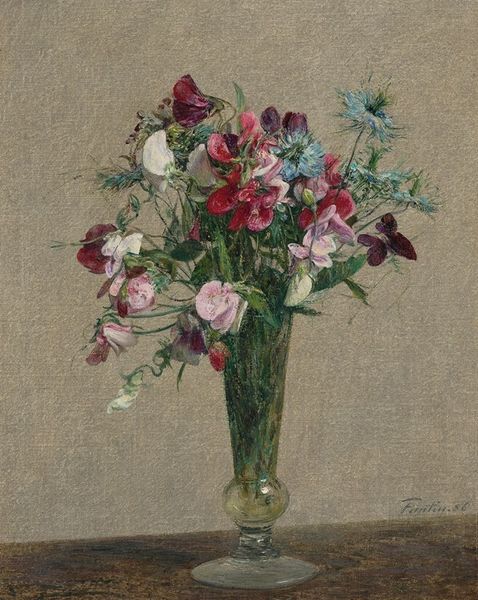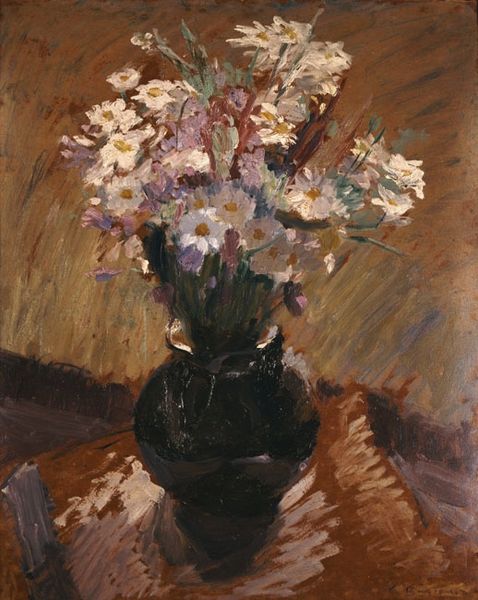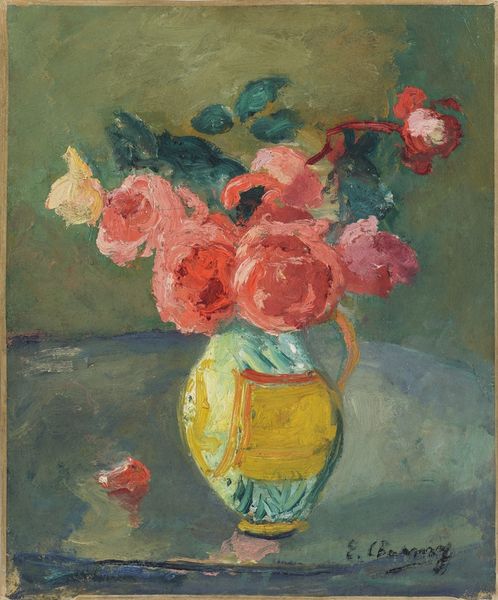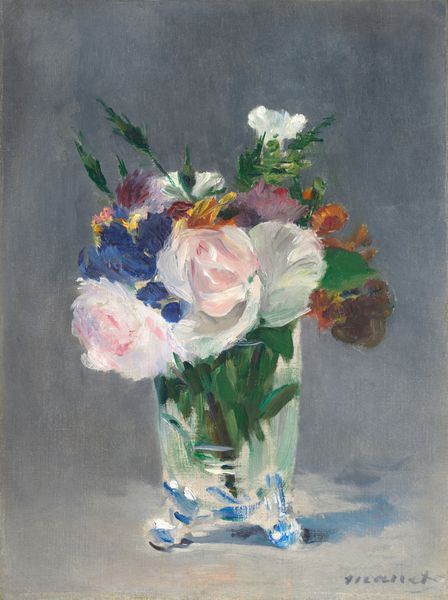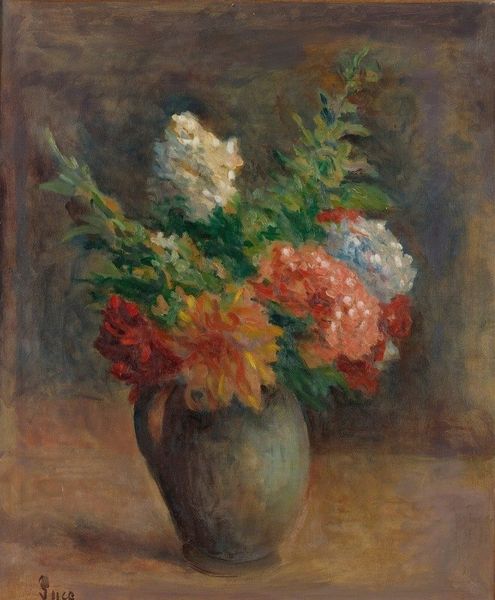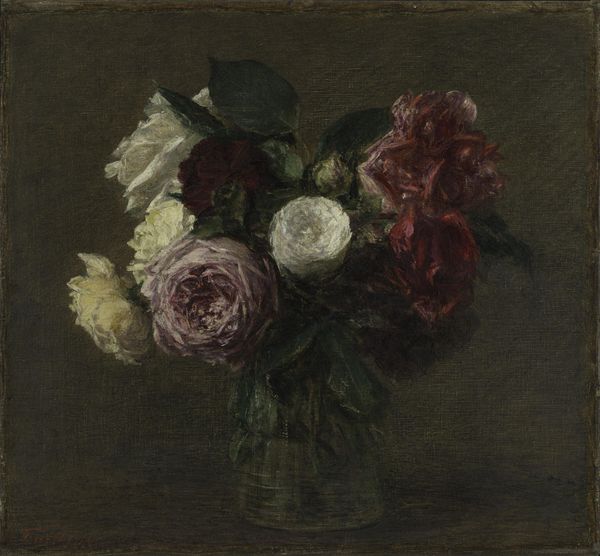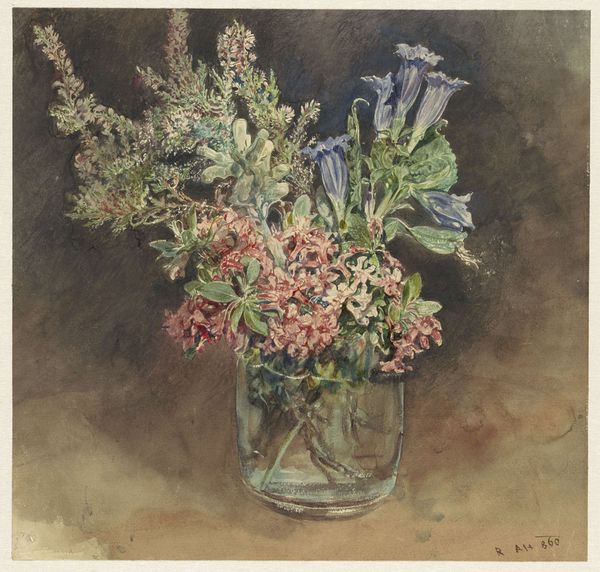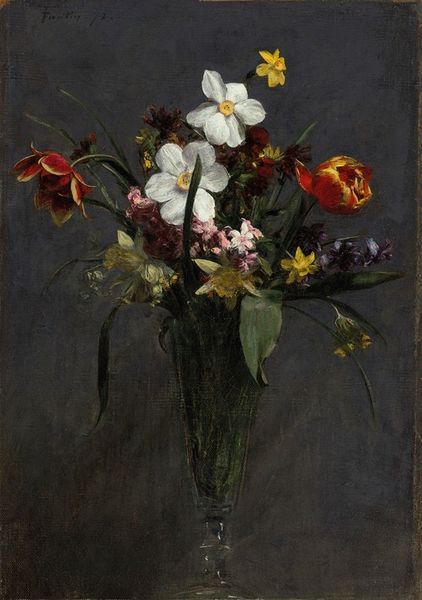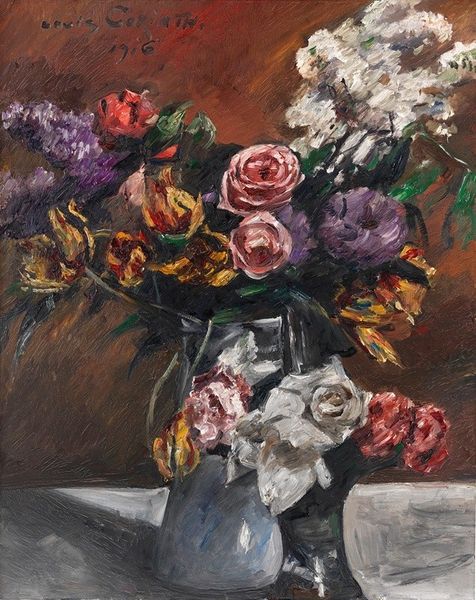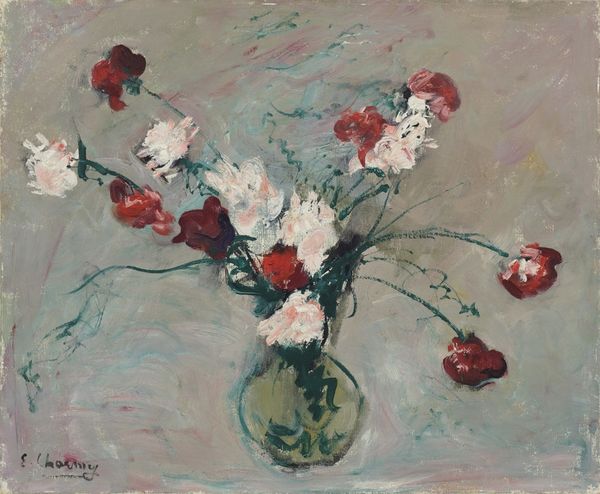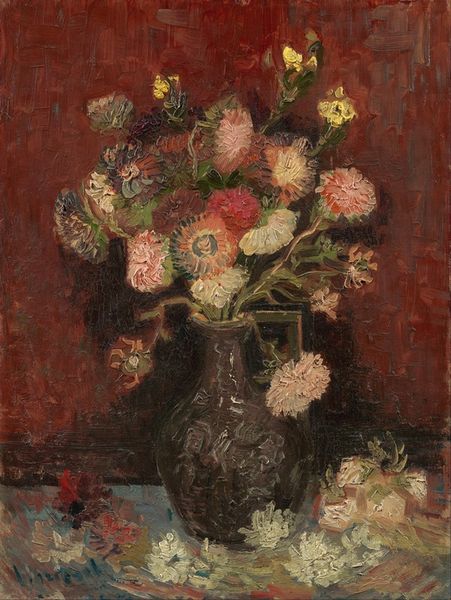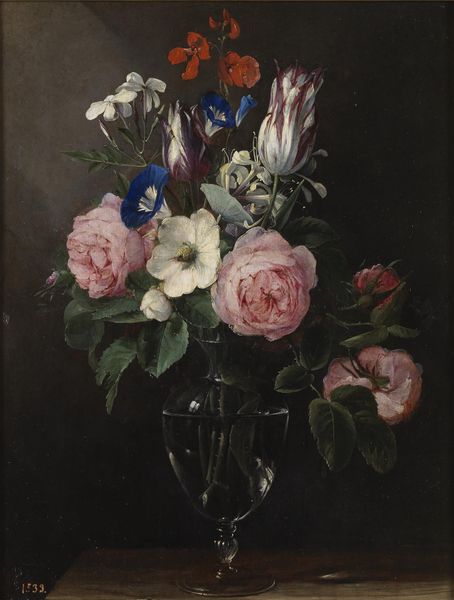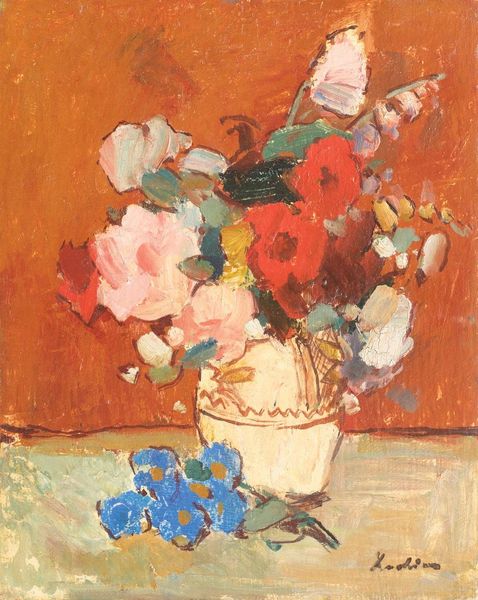
Dimensions: 78 cm (height) x 60.5 cm (width) (Netto), 89 cm (height) x 71 cm (width) x 6.4 cm (depth) (Brutto)
Curator: Today we're looking at "Lervase med tulipaner og andre blomster," or "Earthenware Vase with Tulips and other Flowers" by Karl Schou. The artwork, part of the collection at the SMK, dates from between 1885 and 1938. Editor: The overall effect is rather somber, almost melancholic, wouldn't you say? There's a definite tonal register here; despite it depicting flowers, it avoids bright, cheery conventionality. Curator: That's interesting. Consider the materiality—the thick impasto, especially evident in the highlights of the blooms and vase. It speaks to the availability and evolving use of oil paints in the late 19th and early 20th centuries. The looser brushwork signifies a shift towards modern practices of applying paint, but done on a canvas in a classic size. Editor: Yes, the materiality certainly underscores the composition. Observe how Schou deploys a relatively muted palette to construct the scene; browns, purples, creams, and only the slightest touches of pink guide the eye upwards from the rough-hewn vase toward the floral arrangement. Note how each tulip is individually rendered, but the forms ultimately cohere into a harmonious whole. Curator: Right, and within its historical context, Schou, who worked during a time of evolving economic models, shows us that painting flowers for domestic display becomes, in and of itself, another way of material production for exchange, while the vase may represent how objects get consumed at that time. Editor: That brings us back to the emotionality evoked, and I keep finding the palette somewhat unsettling. Given what the colors themselves mean in terms of semiotics— the subdued hues seem intentional. The almost moribund colors hint that this is not simply a pretty picture of pretty things. Curator: Well, seeing the interplay between the work, production, consumption, I think there's a broader reflection on labor, display and artistic expression during a period of rapid social transformation in Denmark, perhaps explaining its melancholy affect. Editor: I appreciate your points. Looking more closely at the form and technique allows a space to decode not just the objects depicted, but the emotions and cultural symbolism held by this piece, while your material analysis explores how and why it came into being. Curator: Ultimately, this examination emphasizes that the visual arts are often just the byproduct of societal contexts. Editor: An alternative reading suggests how form and material work together in Karl Schou’s art.
Comments
No comments
Be the first to comment and join the conversation on the ultimate creative platform.
